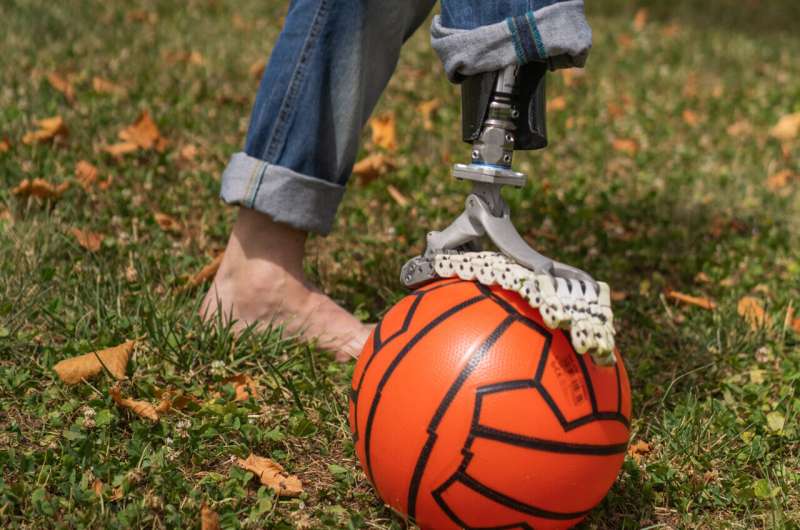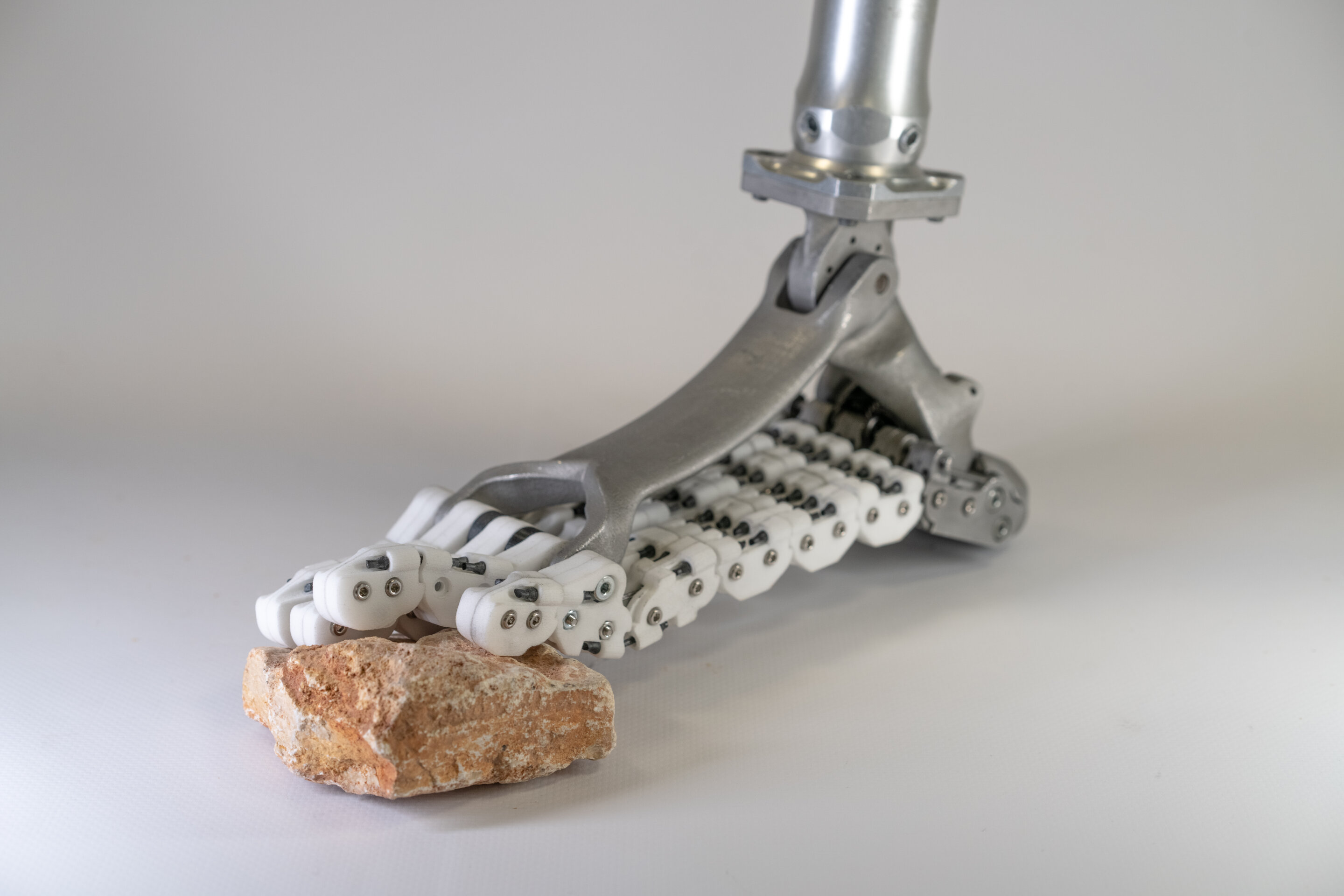
A motorless, flexible, waterproof prosthetic foot inspired by the anatomy of the human extremity is the new SoftFoot Pro bionic foot prototype, designed by the Istituto Italiano di Tecnologia (IIT-Italian Institute of Technology) in Genoa. Its design is unique on an international level and aims to serve both as a flexible technological prosthesis for people with limb-loss and as a solution for the humanoid robots of the future.
Some of its key technological solutions have obtained two international patents, and a third patent is under evaluation by the European Patent Office. SoftFoot Pro is designed to be used on uneven terrain, including slippery ground, where it is typically more challenging for prosthetic users, and for robots, to maintain balance.
The new prototype was shown for the first time to the public during the G7 Health track's Technical Event "Life-long prevention for healthy and active aging" held in Genoa and organized by the Italian Ministry of Health in collaboration with IIT. The event focused on the second priority of the G7 Health track and was embedded within the 3rd Health Working Group of the G7 Presidency and its high-level session on Artificial Intelligence (AI).
The two main themes were Life-Long Prevention (LLP), which is indispensable to prevent premature deaths and years lived with disability, and Innovation, which plays a crucial role in sustaining efforts to attain healthy and active aging.
SoftFoot Pro was among the health technologies that IIT showcased during the event in a dedicated exhibition area. Previously, it was presented orally to the scientific community in Japan at the IEEE International Conference on Robotics and Automation (ICRA 2024, Yokohama) by the invited speaker Manuel G. Catalano, researcher in the Soft Robotics for Human Cooperation and Rehabilitation Lab at IIT in Genoa, coordinated by Antonio Bicchi, Senior Scientist at IIT.
"What prostheses and today's humanoid robots have in common is the characteristic of having flat or low compliant feet, developed to ensure maximum stability but incapable of adapting to changes in terrain contour, slope, and different positions such as kneeling or bending," explains Catalano.
The idea of the research team at IIT, in collaboration with Centro E. Piaggio of University of Pisa, was then to realize an artificial foot inspired by the human anatomy both for its shape and its abilities.

Soft Foot Pro weighs approximately 450 grams and can support loads of up to 100 kilograms. It consists of a mobile arch mechanism in titanium (or aeronautical-grade aluminum alloy), whose ends are connected by five high-strength plastic chains arranged in parallel to simulate the plantar fascia of human feet. These chains are traversed lengthwise by a high-performance, mechanically inextensible cable of 210 millimeters, connected at the heel.
Each chain is characterized by multiple modules made of high-strength plastic derived from automotive technologies and linked to each other by pairs of elastics. The arch system and the elastic chains constitute the artificial equivalent of the architecture composed by tarsus, metatarsus, and phalanges of the human foot.
This specific architecture allows the replication of the windlass mechanism, which progressively stiffens the plantar fascia to evenly distribute the force applied on the ground during walking. This aspect is crucial for the gait of those wearing SoftFoot Pro, as it contributes to a more efficient negotiation with the obstacle and, as a consequence, to a better forward propulsion during the step, along with better energy efficiency during the final phase of stance. At the same time, the adaptable and elastic feature of the sole helps with absorbing approximately 10% to 50% of the impact on the ground.
Moreover, differently from the current rigid prosthesis on the market, SoftFoot Pro can change its shape, allowing the foot sole to deform and to adapt to the roughness of the terrain and any obstacles, minimizing them, improving the naturalness of the step, and enhancing the stability of the user. In this sense, the prototype embodies a form of artificial intelligence, enhancing the system's autonomy and management capabilities in harmony with the sensorimotor characteristics of the human being.
Because of its flexibility, SoftFoot Pro perfectly reproduces the natural positions assumed by the human feet and allows for performing simple everyday actions, such as bending down to tie a shoe, or picking something up from the ground, also improving the walking experience on stairs. Finally, being waterproof makes SoftFoot Pro suitable for outdoor use, on meadows, beaches, and slippery terrain, avoiding the need for the user to eventually switch to prostheses specifically designed for specific activities.
Various SoftFoot Pro prototypes have already been tested by individuals with unilateral lower limb amputations as part of international collaborations with Hannover Medical School (MHH, Hannover, Germany) and the Medical University of Vienna (MUV, Vienna, Austria).
These experiments were conducted in the framework of different European projects, including the project Natural Bionics. The artificial foot has been also successfully tested with the quadruped robot Anymal at the Federal Institute of Technology Zurich (ETHZ, Zurich, Switzerland) and the humanoid robot HRP-4 at the laboratories of the University of Tokyo (Tokyo, Japan).
Citation: Artificial foot mimics human gait, improves stability on slippery ground (2024, July 11) retrieved 11 July 2024 from https://techxplore.com/news/2024-07-artificial-foot-mimics-human-gait.html
This document is subject to copyright. Apart from any fair dealing for the purpose of private study or research, no part may be reproduced without the written permission. The content is provided for information purposes only.
